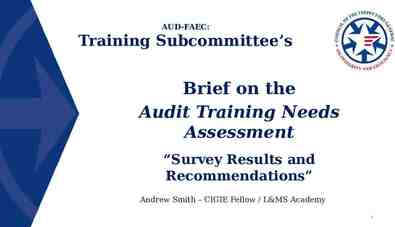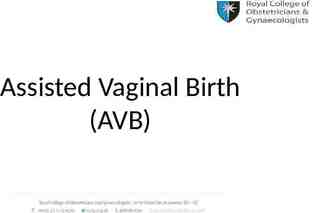Unit 1: Curriculum Internship Competencies & Financial Literacy
17 Slides584.08 KB
Unit 1: Curriculum Internship Competencies & Financial Literacy [presenter’s names]
Agenda Introductions/Re-introductions and Welcome Overview of communication tools Team’s site, calendars, Chromebooks, mentors, workplace partners Questions Workplace Competencies Technical Competencies Soft skills Transferrable skills Finances Getting paid, opening a checking account Paying bills and budgeting (needs, wants, obligations)
Learning Outcome s Understand the different communication tools to be used for this program. Learn how to open a checking account. Understanding the need to live within a budget. Understanding why your credit score is important. Understand the importance of being fiscally responsible.
Part 1: Communication Tools
Overview of communication tools Using your Chromebook Navigating the Team’s site Calendars Email Phone/text number of mentor Workplace partner supervisor Questions
Workplace Competencies Technical Competencies Computer skills – not just word processing, how tech savvy are you? Grow your competencies in this area for better marketability. Example: have a proficiency at programming and programming languages – online courses can certify you and get your ready to start working! Soft skills Oral and written communication skills Importance of active listening in the workplace Transferrable skills Skills you acquire on the job, that you can take with you, to help you apply for other jobs in your future! Are there professional development opportunities or on the job training? If so, always say, YES! Grow yourself!
Part 2: Finances & Financial Literacy
Getting Paid & Opening a Checking Account Do you have a checking account? Checking account: Open online or in-person Things to consider in a checking account: 1. Monthly maintenance fees 2. Overdraft and insufficient funds fees Minimum deposit into account, dependent on the bank and account: 3. Interest rates https://www.first.bank/Personal/Spend /Checking-Accounts 4. Accessibility 5. Account use and goals
What are my goals? My educational goals are My social goals are My financial goals are My family goals are My health/physical goals are My recreational goals are If you had to prioritize these, what are your top 3? Short-term, long-term goals? Adapted from: https://www.practicalmoneyskills.com/assets/pdfs/lessons/lev 4/L4Activities1.pdf
Attaining your goals What can I be doing right now to work toward my goal(s)? What resources do I need to achieve these goals? Adapted from: https://www.practicalmoneyskills.com/assets/pdfs/lessons/lev 4/L4Activities1.pdf
Saving money Why is this important? Attaining your goals Security How much do you pay yourself out of your paycheck? Are you seeing any patterns in your spending habits? How do you decide to make a purchase? What factors influence you to make a purchase? https://cdn.ramseysolutions.net/media/pdf/forms/ben and arthur military.pdf
Budgeting The budgeting process starts with monitoring your current spending. Evaluating wants, needs, and obligations. Find a career you might like to pursue, look it up in this Bureau of Labor Statistics Occupational Outlook Handbook: https://www.bls.gov/ooh/a-z-index.htm Link to budgeting worksheet. Adapted from: https://www.practicalmoneyskills.com/assets/pdfs/lessons/lev 4/L4Activities1.pdf
Activity Let's Learn to calculate our taxes!
Calculating Income Tax If you work: 720 total hours over the course of 30 weeks (24 hr/week) at 15/hour 10800 Federal Income Tax max at 10% FICA Tax 8% State Income Tax max at 6% STL City tax 1% Calculating 26% of your income. 10800 x .26 2808 Federal 1080 FICA 864 State 648 Local STL 108
Calculating Income Tax Scenario: 350 total hours over 2 weeks at 15/hour Federal Income Tax max at 10% FICA Tax 8% State Income Tax max at 6% STL City tax 1% Calculating 26% of your income. 405 x .26 106 Federal 40.50 FICA 32.40 State Local STL
Reminder about Unit 2 Curriculum [Month] [Date] @ [Time]am/pm
References Activities. (n.d.). Retrieved February 17, 2022, from https://www.ngpf.org/ ANALYZE: Categorizing Credit. (n.d.). Google Docs. Retrieved February 17, 2022, from https://docs.google.com/document/d/1najungSSd5kAJSoxz3mJ8uSvexiKw4OhKXo0FWwy6Tc/edit?usp embed facebook Checking Accounts. (n.d.). Retrieved February 17, 2022, from https://first.bank/Personal/Spend/Checking-Accounts College. (n.d.). Retrieved February 17, 2022, from https://www.practicalmoneyskills.com/teach/lesson plans/college Dantus –, C.-R. (n.d.). Budgeting: How to create a budget and stick with it. Consumer Financial Protection Bureau. Retrieved February 17, 2022, from https://www.consumerfinance.gov/about-us/blog/budgeting-how-to-create-a-budget-and-stick-with-it/?utm source wat&utm medium article&utm cam paign fhi360 1809 art DeMatteo, M., June 4, L. J. on, & 2019. (2019, June 4). 12 Fun Savings and Budgeting Activities for High School Students. We Are Teachers. https://www.weareteachers.com/saving-budgeting-activities/ Jump tart’s Reality Check. (n.d.). Jump tart Coalition. Retrieved February 17, 2022, from https://www.jumpstart.org/what-we-do/support-financialeducation/reality-check/






















